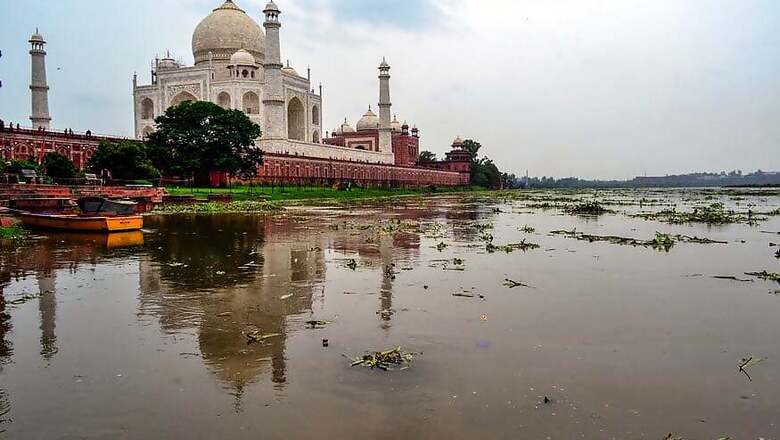
views
Agra: The Archaeological Survey of India (ASI) has started work on cleaning the insect faeces deposited on some sections of the iconic Taj Mahal, officials have said.
The problem was first detected on the northern arch and marble pedestal wall of the monument's main mausoleum in the summer of 2015, Superintendent, Science Branch, ASI, Manoj Kumar Bhatnagar told PTI.
By application of clay pack on its walls, the stains were removed, but as they reappeared, the ASI undertook a study of the problem. The findings showed that this problem was also present on other monuments facing the Yamuna, namely Itmad-ud-daullah, Chini Ka Rauza, Mehtab Bagh and portions of the Agra Fort, he said.
"The cleaning work has started. It will take another three to four days to clean the patches made by insect excreta," Bhatnagar said.
He said the insect causing this problem was named 'goeldichironomus'. Pollution and water stagnation in Yamuna breed algae and hence the insects. In the rainy season, when the water level is high with maximum flow, there is no growth of algae or the insect, the official said.
The insects are a bio-indicator of water quality and localised water pollution. The larvae fed on the chlorophyll from the algae living on the surface of the polluted Yamuna. They then grow into adults that prefer artificial light and form large swarms containing millions of individuals.
The official said the chlorophyll consumed by insects as larvae was discarded as faeces when they were adults.
The insects were attracted to the white stone of the Taj Mahal and they excreted the green-black faeces on its walls.
The official said the insect activity was most pronounced in the evening.
The insects move in swarms of millions from the riverside towards the monument attracted by the artificial light. They prefer the shadowy portions at the monument where wind circulation is minimum, he said.
The official said the insect is the most active when the temperature is around 28-35 degrees Celsius and the flow of the water is almost nil at the banks of the river.
He said solutions like Yamuna desilting and restriction of sources of water pollution into the river will help curtail the problem to a large extent.




















Comments
0 comment